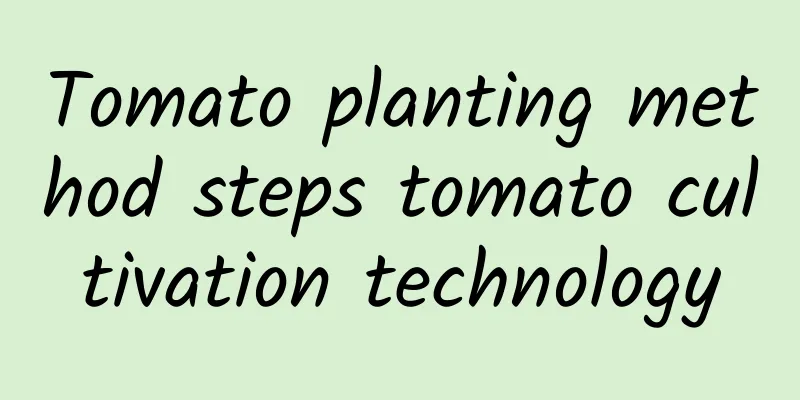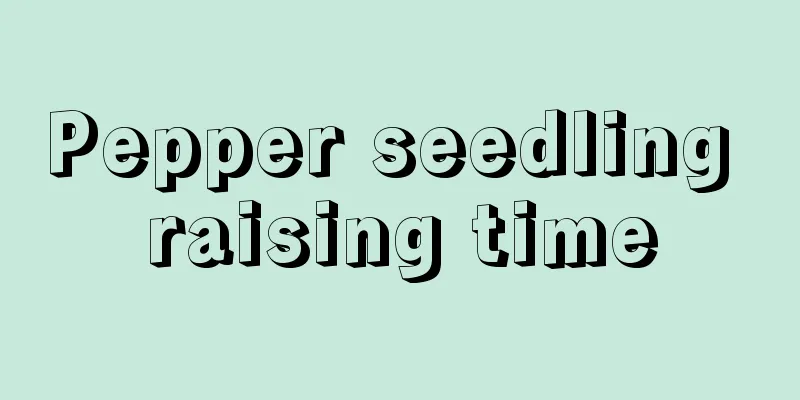Tomato planting method steps tomato cultivation technology

|
Before planting tomatoes, the selected seeds should be sealed and fermented at room temperature for about 2-4 days. After washing them with clean water, they should be soaked in warm water for 3-6 hours. This can increase the survival rate of tomatoes. Tomato Growing Conditions1. Lighting conditions Tomatoes are light-loving, short-day crops, but most varieties are not strict about sunlight requirements and do not require a specific light cycle. As long as the temperature is suitable, they can be cultivated throughout the year. However , they can only grow well under 16 hours of light conditions . 2. Moisture conditions The aboveground stems and leaves of tomatoes are lush, and the transpiration is relatively strong. The transpiration coefficient is about 800, and it requires more water . However, the tomato root system is very developed and has a strong water absorption capacity. The water requirement is semi-drought-tolerant, and the relative humidity of the air should be 45-50% . Tomato Planting Steps1. Plot selection Tomato planting should be done in areas with deep soil, good drainage and irrigation, good ventilation and air permeability , and where no solanaceous vegetables have been planted for 2-3 years. Avoid areas without irrigation facilities for cultivation. 2. Variety selection When planting tomatoes, you should choose varieties that are disease-resistant, high-quality, high-yielding, resistant to storage and transportation, have good commercial properties, and are suitable for market demand , such as Jintiewang, so that they can grow better after planting. 3. Sowing and seedling raising Tomatoes are usually planted in early March to early April each year . Use fertilizer balls to grow seedlings in a small arch shed, mix the soil with decomposed farmyard manure and knead it into a fertilizer ball about 5 cm in diameter, put a seed in it, arrange it evenly, cover it with nutrient soil, apply diluted manure water, and cover it with plastic film. Key points for high-yield management of tomatoes1. Fertilization management If you want to achieve high yields of tomatoes, you should mainly use organic fertilizers, and combine them with nitrogen, phosphorus, potassium and trace elements . Apply about 500 kg of fermented high-quality fertilizer per acre. This will have a significant effect on improving the quality and smoothness of the fruit. 2. Framework management After the tomatoes are planted, before each inflorescence sets fruit, the support should be inserted and the stems should be tied to the support with ropes from the top of the first fruit sequence. The binding should not be too loose or too tight . Later, tie it 2 to 3 more times depending on the growth height. |
<<: Lettuce planting method and steps, lettuce cultivation technology and time
>>: How to grow and care for the succulent Guanghan Palace
Recommend
How to grow Chlorophytum comosum hydroponically to make it more vigorous
Chlorophytum comosum is a very ornamental plant. ...
What are the breeding methods and precautions of green elves?
Green elf breeding method Green Elf belongs to th...
How to propagate rubber trees
1. Leaf cuttings This method is best used when th...
How to Plant Dogwood Seeds
1. Seed selection Generally, we will choose some ...
Does the smooth sailing flower prefer sun or shade?
The smooth sailing plant is also called white pal...
How to grow the Night Guanyin Lotus
1. Maintenance methods 1. Temperature: The temper...
How to cultivate succulent rabbit ears
The succulent rabbit ears are very cute. Most of ...
How do white orchids survive the winter?
temperature Suitable temperature is the key to en...
To repot an old succulent plant, you only need a pair of tweezers and a brush, and the stem will grow longer and stronger!
Repotting old succulent plants like this will mak...
How many years does it take for an orange tree to bear fruit?
Orange trees bear fruit after several years of pl...
Do loquat trees like water or drought?
Do loquat trees prefer moisture or drought? Loqua...
How deep should the roots of the dripping guanyin be buried?
1. How deep is the burial When planting the weepi...
How to make banana peels into fertilizer for flowers
1. Making liquid fertilizer 1. Collect banana pee...
How to grow the bird's nest
1. Breeding environment (1) Soil: It should have ...
What to do if the leaves of Christmas cactus droop
1. Root rot (1) Reason: We can first observe the ...









